After two long years of screen time and staying home, the 2022 definition of luxury is experience. But, let’s go further. How about a time-shifting, immersive experience? That you can find at Sextantio, an Italian albergo diffuso set within the medieval village of Santo Stefano di Sessanio in Abruzzo. Only two hours from Rome, in the high-altitude Gran Sasso national park, Sextantio truly occupies another time and space.
A project of entrepreneur/historian Daniele Elow Kihlgren, who also developed the Matera sassi property, Sextantio proves the idea that living within the original footprint, as peasants did for hundreds of years, can be an indelible experience. Preserving history with minimal impact was possible here, as Kihlgren says, because the village was actually saved by being abandoned.
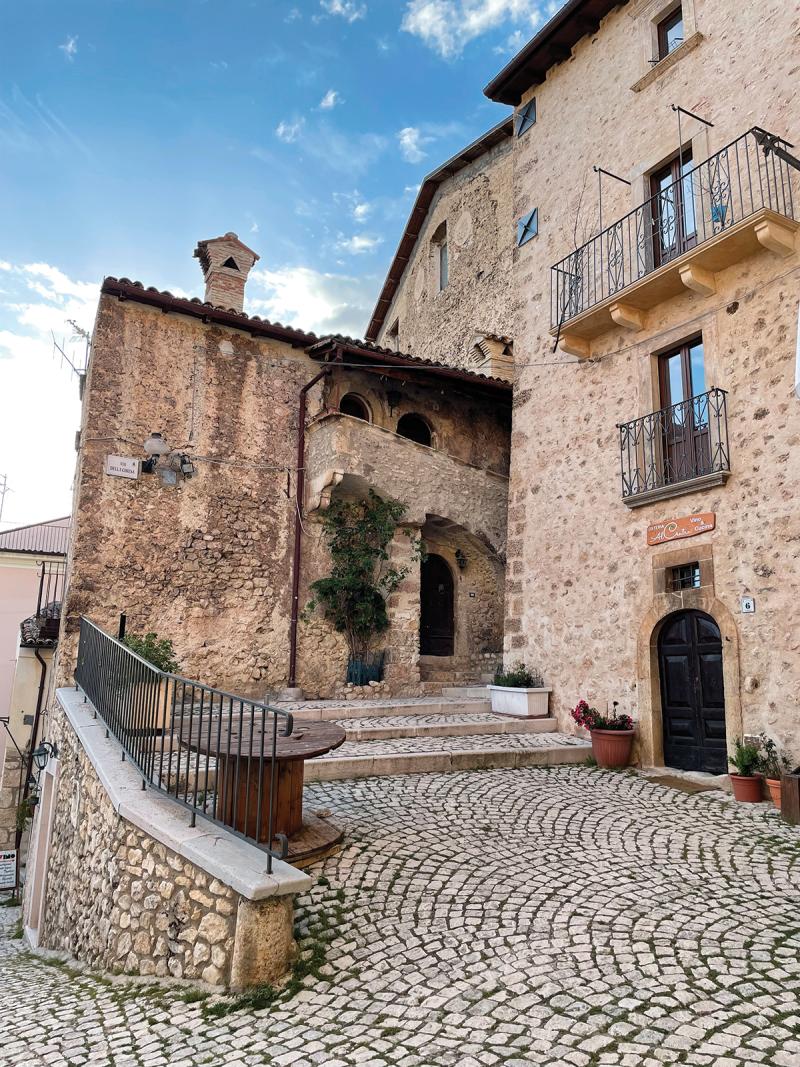
The atmosphere at Sextantio is evocative, with flickering candles, subdued electric lighting, handwoven woolen bedspreads, original fireplaces, and furniture salvaged from both ancient trash heaps and local museums to be brought back into service. This is not a glossy makeover; still, guests find it unexpectedly compelling to inhabit the lives of the poorest shepherds, ancestors of those who went to America with one-way passports, never to return. (The Philippe Starck bathroom fixtures, Internet and underfloor heating are significant touches of contemporary comfort. There is no pool or air conditioning, but there are high altitude breezes).
When Kihlgren discovered Santo Stefano in the mid-90s, there were about three dozen inhabitants rattling around in a medieval village built for many more. He purchased 30 percent of the crumbling town and developed 30 rooms, most of them connected to common spaces where families cooked in rustic fireplaces. He also found hand-painted ceilings here and there, dating back centuries, to when the de' Medici family of Florence came to buy the exceptional wool from the sheep grazing on the mountain pastures.
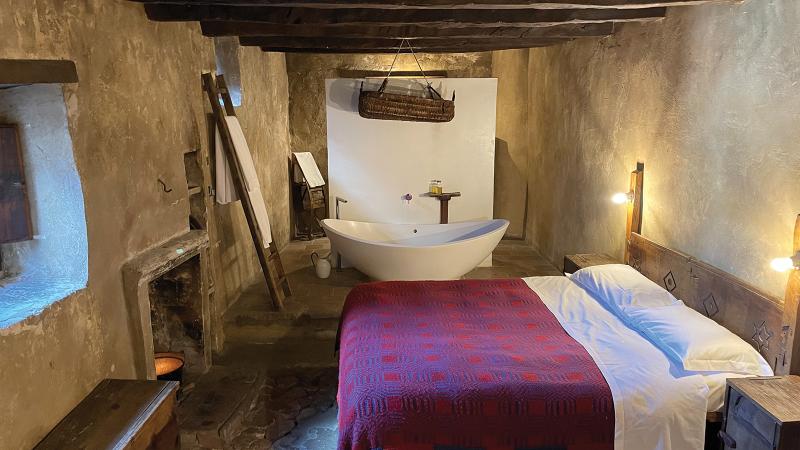
Sextantio is a classic albergo diffuso, with rooms spread around winding, cobbled streets of the village, served by a central reception. There are often two bedrooms off a common room, which may be furnished with a dining table, chairs and a madia, the antique cabinets designed for storing a month’s worth of bread. This configuration makes it possible to use the entire space as a suite for a group traveling together; otherwise, it’s a kind of foyer for the bedrooms.
Note: Since every room is different, make certain to state your preference for a tub or shower. The Sextantio website has multiple photos of each room or suite so that reservations may be made for a specific one. For physically challenged travelers, ask for easily accessible rooms. There are no cars within the village, although there is parking on the periphery.
Number 33, Le Rondini, on Via Principe Umberto Primo, is up a half flight of stone exterior stairs, close to Sextantio’s Cantinone and wine bar. The common area opens to one bedroom on the same level, with a matrimoniale (queen) bed with handwoven wool spread, a freestanding bathtub, two small windows, and a door leading to an outside staircase. There is no door to the bathroom, in keeping with the mission to retain the original openings, though there is privacy created by a central wall.
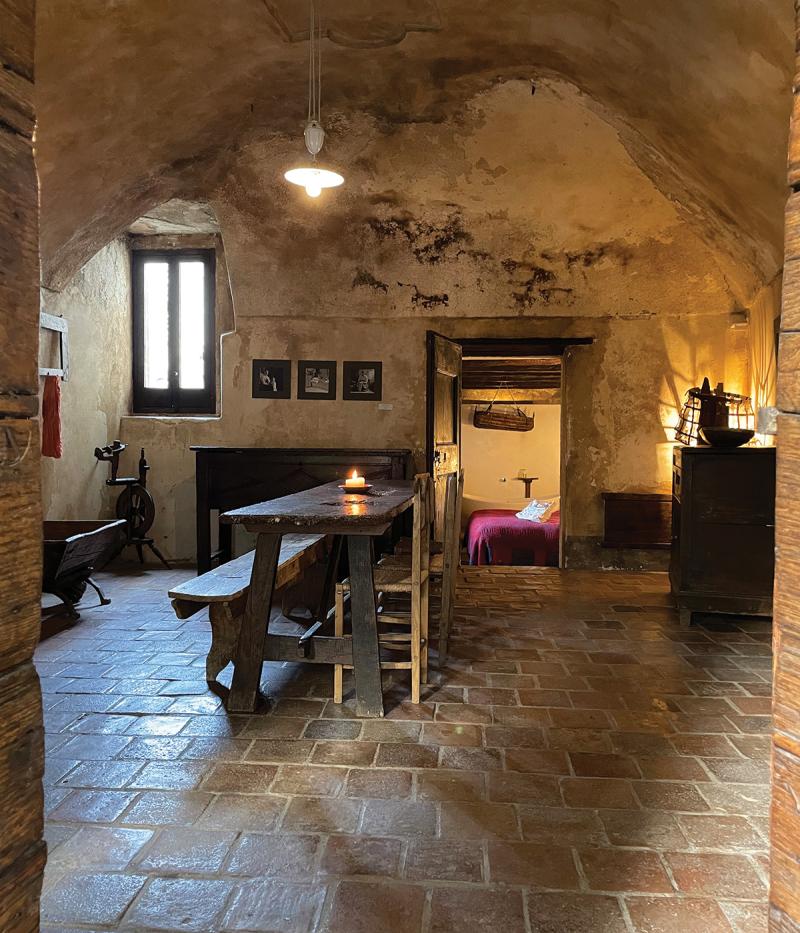
There is a second bedroom up a flight of steep stairs, with views worth the climb for physically fit guests. The waist-high iron bed recalls the days when farm animals slept underneath to keep the humans warm during freezing winter nights. This room has a shower rather than a tub, which is located within the bathroom itself.
Connecting off the arched loggia above the main piazza is Le Loggette, whose guests may make use of the private loggia space to relax in the mountain air. There are hand-painted ceilings, a studio with sofa, and a bedroom with king-sized bed.
For families, La Corte, with two adjoining rooms and a private entrance, may be a good choice — one has a king-sized bed, while the other has iron twin beds.
Number 24, L’Alchimista, Via della Chiesa, was the old alchemist’s studio. There is a daybed in the common area and it is among the only rooms with a kitchenette. Upstairs is a bedroom with a bathtub in front of the fireplace. There are beautiful views across the tiled roofs to the mountains.
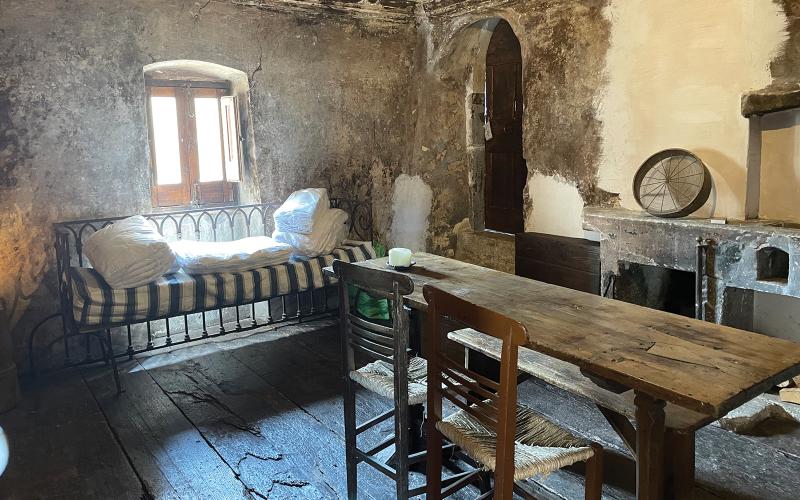
In addition to the wine bar/tearoom, there is a full-service ristorante, Locanda sotto gli Archi. The commitment here is to serve traditional recipes and local ingredients. After having dinner there, we now believe the poorest inhabitants of the village must have eaten as well as the nobility — the food was exceptional. There was an ample selection of local Abruzzese wines to try, including several Montepulciano d’Abruzzo Reserves. (Sixty-five percent of Abruzzo is mountains, so the mountainside vines benefit from the Adriatic sea breezes.)
Though guests should be able to manage cobblestones and stairs within the village, Sextantio offers activities for both hardcore outdoor enthusiasts and those who prefer to participate inside. The mountain and national park offer guided or independent hikes, biking, skiing and horse riding, which may be booked at Sextantio. Within the village, there are classes in goldsmithing, bread-making, traditional cooking, and pastry-making, including ferratelle, the traditional Abruzzese dessert. There are also shops selling artisanal ceramics and woven goods.
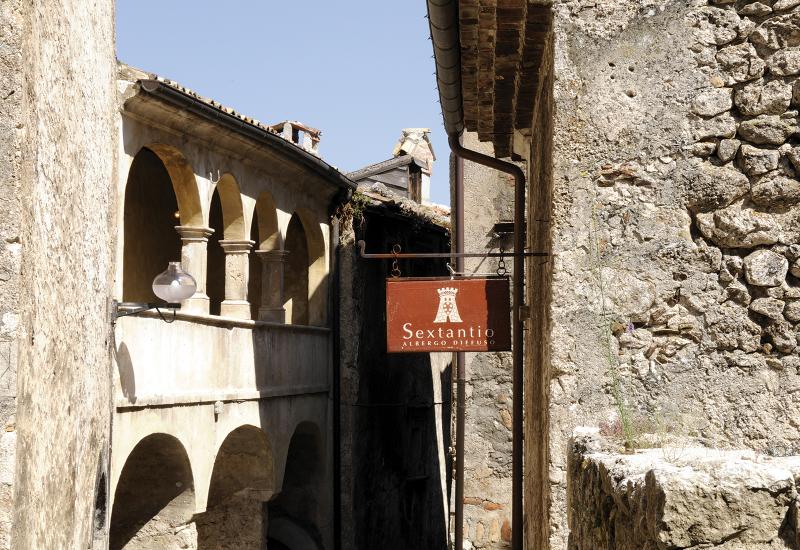
Sextantio founder Kihlgren and the staff are dedicated to balancing fine hospitality with serious conservation and historic preservation. Hotel managing director is Roberta Deorsola, Donatella D’Aversa is event manager, Nunzia Taraschi is both CEO and anthropologist, and Michele Centonze is the sales and marketing director. Centonze can be reached at [email protected].
Travelers going on to Puglia or Marche can drive to Abruzzo’s 80 miles of coastline in about two hours. Once there, turning south, between Ortona and San Vito Chietino, is the Trabocchi Coast, where offshore fishing platforms that look like giant grasshoppers serve seafood meals at lunch and dinner. Mealtimes, menus, and prices are fixed, so advance reservations are essential. For outstanding seafood onshore, there is La Balena Osteria di Mare (011-39-348-384-0677) in S. Vito Chietino, where Stefano serves an à la carte menu overlooking the turquoise waters of the Adriatic. There is train service up and down the coast, as well as good highways. There are flights in and out of Pescara and Rome’s airports are a little over two hours away.
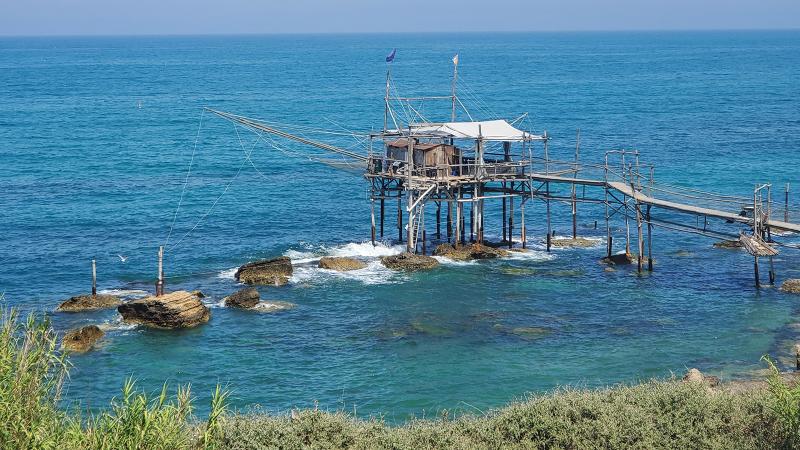
At the moment, Abruzzo may not be top of mind for travelers to Italy, but that is exactly why it’s so attractive. Possibly the most unspoiled region of the country, now is the time for travel-starved, adventurous people to experience it.
Related Articles
Umbria’s Reschio Estate Unveils New Spaces
First Look: Baglioni Masseria Muzza